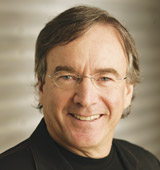|
Executive Interviews: Interview with Daniel Lamarre on Blue Ocean Strategy
December 2008
-
By Dr. Nagendra V Chowdary
Cirque Du Soleil has staged shows
in various countries across North
America, Central Europe, Eastern
Europe, Central Asia and South
Asia. Of all shows staged the world
over, which has been the most
rewarding and which has been the
most disappointing experience so
far? Are there any lessons from
internationalizing Cirque Du Soleil's
entertainment value proposition?
Our shows have equally been
successful almost everywhere. One
thing we have learnt in our early days
was not to try to translate the name of
our company in English to gain
international recognition. We tried it
when we first performed outside
|
|
Quebec (in Ontario) and it proved us
that it was a bad idea. People
associated the word "circus"to
traditional circus, with animals and
were not interested in our show
while we were in Toronto. It did not
take us long to come back to Cirque
du Soleil instead of Circus of the
Sun What does competition mean to
you? Who do you think are your
competitors, both direct and
indirect? How intense is this
competition? How do you rate the
intensity of your competition on a
scale of 1 to 10 (10 being highly
intense)?
Basically, any "ticket seller"is our
competition. We all compete for the
discretionary consumer budgets! There is every danger that a Blue
Ocean can eventually become a Red
Ocean. Are you contemplating on
any more Blue Oceans to preempt
any possibility of Cirque Du Soleil
getting into a Red Ocean?
That is what we watch every day!
Again, we do not take anything for
granted and we need to always keep
our pertinence! On what basis do you choose the
themes for your shows? Where do
you look for inspiration for the
themes?
The inspiration for our shows comes
from various sources. For the last two
years, we have had a team of
researchers whose mandate has been
to nourish and stimulate the ability of
our creative teams by doing some
research on various fields (fashion,
architecture, theatre, dance, music,
visual arts, sculpture, etc.) and
observe the trends. The results of
these researches are compiled and
used for brainstorm discussions and
to stimulate ideas among our show
creative teams. Sometimes, just an
image in a magazine will serve as the
bare inspiration for a costume or a set
element and will evolve into something more complex or,
sometimes, completely different.
Those research results are the start of
any creation process for our shows.
Literally anything can trigger
inspiration at Cirque du Soleil a
movement, an image, a sound, or an
art form. The creation process at
Cirque du Soleil favors the work in
progress approach where ideas can
evolve from discussions; trials and
errors; and brainstorm sessions. How do you keep 3500+
employees motivated, galvanizing
their talents for a vision? How do
you keep them engaged? In any artrelated
business, experts have
opined that its all about managing
egos? Do you encounter such
problems? If yes, how do you
resolve them?
We actually have more than 4000
employees right now. Cirque offers to
its creators, artists and artisans the
support that they need to take risks
and create things like a casting
department (that scours the earth for
talent); a training studio (full of
exceptional coaches and therapists);
and a unique costume workshop
(that can build almost anything). We
try to offer people the nurturing
evironment they need to be creative.
Cirque du Soleil provides a
stimulating work environment,
where you can feel the creativity in
the atmosphere right from the
physical workplace (nicely designed)
to the food served at the cafeteria (very
good quality, original and
diversified!). One intriguing phenomena
concerning Cirque Du Soleil has
been its ownership structure. Why
do you wish to remain private? Do
you have any plans to go public?
As I explained earlier, Cirque du
Soleil has always taken risks,
whether creative or business type of
risks. By remaining private, we can go
on taking risks without having to
justify any creative or business decision to stakeholders. Guy
Laliberte has always wanted to keep
100% control on the creative content
of any project Cirque du Soleil has
ever created. Being a private company
enables him to do that and as long as
he's with the company, Cirque du
Soleil will remain a private company Whats your vision for Cirque Du
Soleil for the next decade, and
beyond?
I dream of having a Cirque du Soleil
show in every important city in the
world! I dream of ensuring the high
quality standards of our shows for
the next decades! I dream of having
the creators of the world pursue their
dreams with Cirque du Soleil. I
dream of having one of our artists as
the president of Cirque du Soleil one
day! I dream that we keep our
audiences dreaming!
1.
Blue Ocean Strategy Case Study
2. ICMR
Case Collection
3.
Case Study Volumes
|
The Interview was conducted by Dr. Nagendra V Chowdary, Consulting Editor, Effective
Executive and Dean, IBSCDC, Hyderabad. This Interview was originally published in Effective Executive, IUP, December
2008. Copyright © December 2008, IBSCDC.
No part of this publication may be copied, reproduced or distributed, stored in a retrieval
system, used in a spreadsheet, or transmitted in any form or medium electronic,
mechanical, photocopying, recording, or otherwise without the permission of IBSCDC. |
